The Tokyo & Mexico City series, Personal notes, Part 2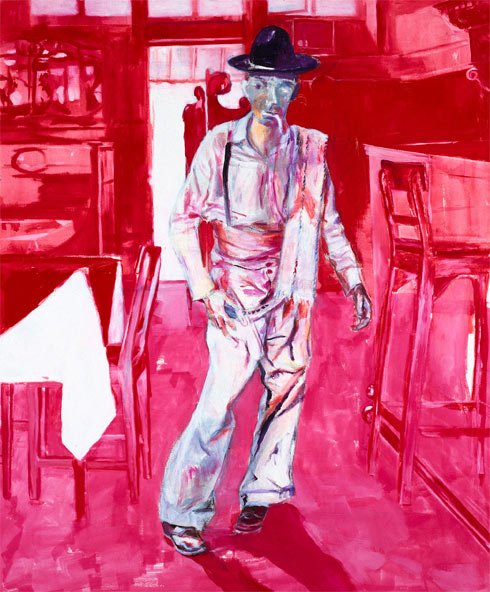
Cantina, 2002. 140 x 115 cm, Oil on Canvas.Cantina marks the first painting in a series where I use Buster Keaton's cinematic persona as an alter ego figure. A hired actor who plays scenes from my personal life. 'Cantina' was painted in Mexico City. Cantina is a Spanish name for a traditional Mexican bar, traditionally a man's hangout. I read once, in an article that discussed Tel Aviv's nightlife scene, a female customer's observation that what makes one attractive is the way one enters the bar, “the way he cuts the air”, slices the space. I am entering La Opera Cantina in Mexico City's 5th of May street. I cut the Cantina air, announcing my well argumented insecurity. 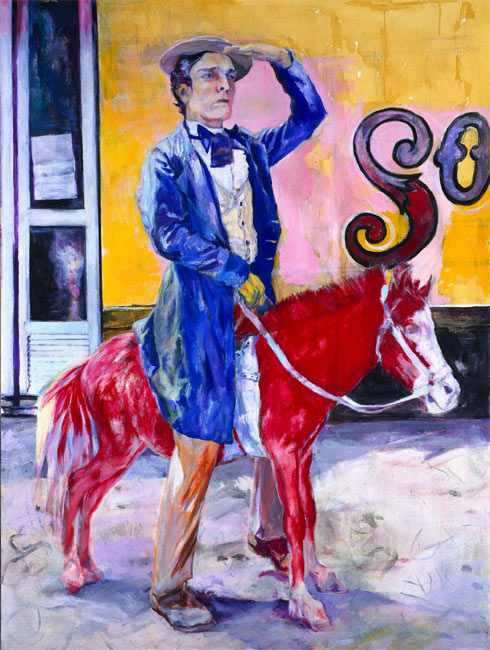
So, 2002. 140 x 105 cm, Oil on Canvas.The letters on the Cantina's yellow walls read 'so', a part of wall commercial promoting 'Sol' beer. The Spanish 'sol' (sun) turns into the adverb English 'so'.'So, where to now?' So celebrates the lost travellers who follow the directions of their faulty compasses. I think we are all riding this horse, I fear the ones who fail to recognize it. 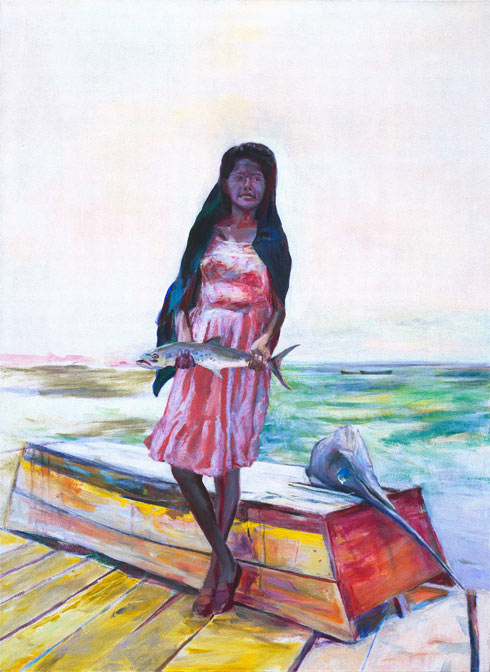
A Fish Called Sierra (after Manuel Alvarez Bravo) 2002, 130 x 100 cm, Oil on canvas.A fish called Sierra is based on a photo taken by the great Mexican Photographer Manuel Alvarez Bravo. Bravo has captured innocence and beauty without slipping into romanticism or sentimentalism. I wanted to create an image that act as a certain homage to Bravo and his land. I cast myself as the beheaded Swordfish, wishing to lose my head, wishing to be reborn in this Mexican fishing village, innocent again. 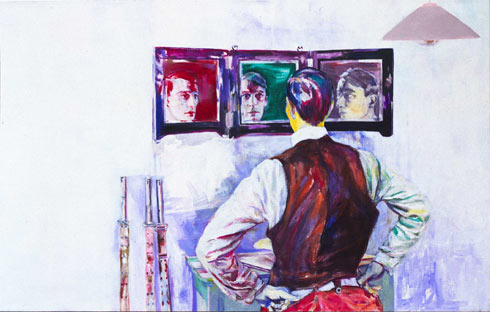
Untitled (3 guns) 2002-2003. 80 x 125cm, Oil on Canvas.Anton Chekhov, the Russian playwright, wrote that a pistol, appearing in the first act must be fired in the third. The Identity Game. 4 portraits. 3 of them will be shot down. 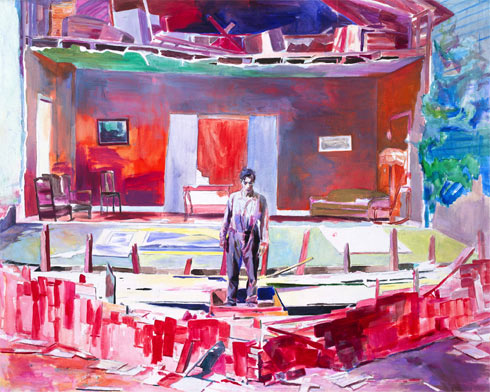
Untitled (fallen) 2002-2003. 126 x 158 cm, Oil on CanvasFallen is another painting based on Buster Keaton film imagery. The painting is a reaction to the apocalyptic sensation that followed the September 11th attack on the U.S.A. The inconceivable fall of New York's twin towers and the consequent fall of many other towers, convictions and ideas around the globe have created a new reality, where any artistic act has turned to a degree into a political statement. In the aftermath of September 11th, in the turbulence of chaos and confusion, I felt that art should assume its traditional role as a mediator between the world of occurrence and the world of form and reason. 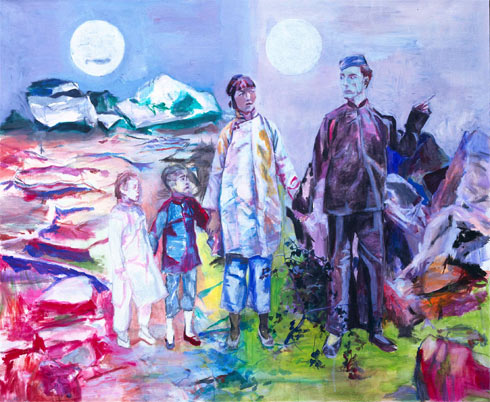
That Moon, 2003. 135.5 x 164cm, Oil on Canvas.That Moon is a labyrinth space where, like in a fair's mirror-room, one can't distinguish between facts and mere reflections. The landscape is borrowed from Japanese garden imagery, the plant from New Mexico’s 'White Sands' nature reservation. The Caucasian male, the Asian female, their children: all framed in twilight cultural space. The moon, which might have given an indication of one’s coordinates, is multiplied and deceiving. That moon is a homage to a dear friend, the American painter Tom Reyes, his Japanese wife Makiko and their two children Hanna and Joe. An interracial family, making their way between cultures, a reminiscence of my own family’s trail. 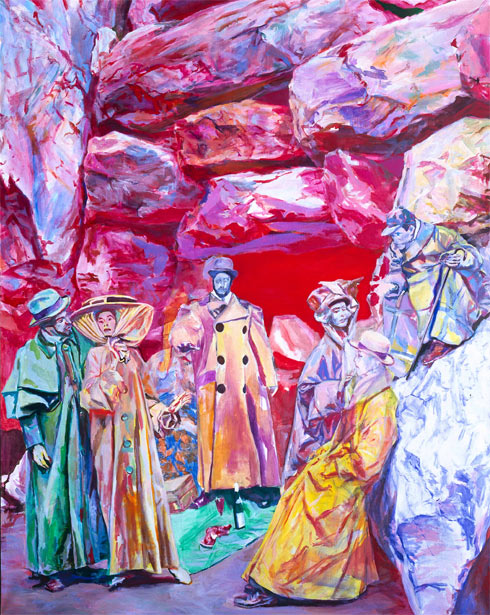
Untitled (Ginza/Picnic at Tintagel) 2003-2004. 215 x 170 cm, Oil on Canvas.'Ginza/Picnic at Tintagel' tries to portray the sense of isolation and loneliness that I experienced in Tokyo. This painting's setting could have been shifted from the rocks of Tintagel to Ginza's high street, to Mitsukoshi department store or to Wako window's display. The bloody rocks could have been exchanged with Hermes bags, with bowing elevator's girls and the sweet scent of perfumes. Sublime elegance, endless loneliness. |
All contents © Copyright Amitai Ben David 2006-2009. Website by Almost Daily.